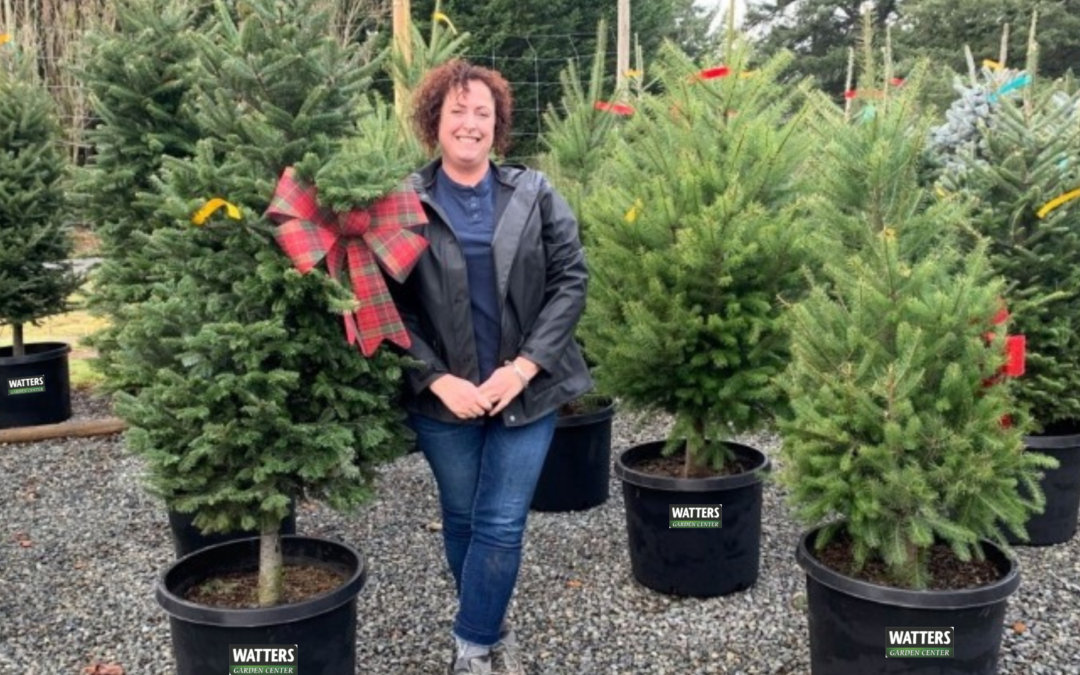Now is the perfect time to plant screens, so they’ll be lush in the spring
By Lisa Lain, the Garden Gal
If you ever feel as if prying eyes are looking right into your home, and you’d love to enable hot tub sessions with maximum privacy from that too-close-for comfort neighbor, this is for you.
The solution to these unwanted invasions is not rocket science. Simply plant a wall of living trees and shrubs to block an undesirable view and create the privacy you desire! Now is the time to plant strategically placed evergreen privacy screens for maximum growth and seclusion in spring. Fall planting encourages fast-growing trees and shrubs to grow maximum autumn roots crucial for a lush wall in the spring.
To successfully add evergreens to a landscape, several essential steps are worthy of your time and energy. The most crucial requirement for trees to thrive is drainage. Blend one shovel-full of Watters Premium Mulch into every three shovels-full of native earth to pack around each root. Feed new plants with 7-4-4 All Purpose Plant Food right after planting. The cottonseed meal in this natural food promotes robust root formation while maintaining good foliage color. Lastly, deep soak each plant with a solution of Root & Grow. This specially designed compost tea encourages new roots that grow deep and strong.
Best Evergreen Trees Used as Screens and Accents
When you’re ready to choose the trees for your living wall of green, read through these popular choices of local screening plants that fill in fast.
Arizona Cypress. My favorite native evergreen screener is the Arizona cypress. It is like a giant alligator juniper in size and color but grows faster and fills in more thoroughly than other screening plants. Growing to more than 20 feet tall and 12 feet wide in just a few years, you can see why this is the number one choice for a planted screen.
Colorado Spruce. Very cold hardy, this spruce is a perfectly symmetrical Christmas tree shape and is an excellent choice for a front yard holiday tree or as a semi-formal accent in a large yard. It makes a pretty evergreen background against contrasting foliage colors, flowering shrubs, or highlighting autumn leaves. Line up several for a windbreak or to quickly diffuse lights and sounds along busy streets.
Deodar Cedar. This is the largest screening plant, growing to more than 50 feet tall and 20 feet wide. It is one of the fastest growing of the screens, growing two to three feet every year. This cedar thrives on low water use, drought conditions, and drip irrigation, as with most upright evergreens. Make sure to give it plenty of growing space because, with its long, swooping branches of Arizona Blue foliage, this tree is going to need it!
Juniper. Let’s look at the juniper family. Spartan, Blue Point, and Wichita are on the extensive list of junipers available at Watters Garden Center now. Juniper forests surround us, so be assured junipers are naturals to add to a landscape. Whichever color and height you like, all grow well in this part of the world.
Austrian Pine. This handsome evergreen tree boasts a densely branched conical form when young that becomes umbrella-shaped with age. Needles are long and dark green. Tolerates poor soils and harsh, drying winds. A great conifer for windbreaks or used as large landscape specimens.
There are many more choices, such as the larger evergreen shrubs and deciduous trees like aspens. We’ll discuss those varieties another time.
Book just published!
Until the next issue, I’ll be helping local gardeners plant privacy here at Watters Garden Center.
Lisa Lain can be found throughout the week at Watters Garden Center, 1815 Iron Springs Road in Prescott, or contacted through his websites at WattersGardenCenter.com or Top10EvergreenTrees.com.

